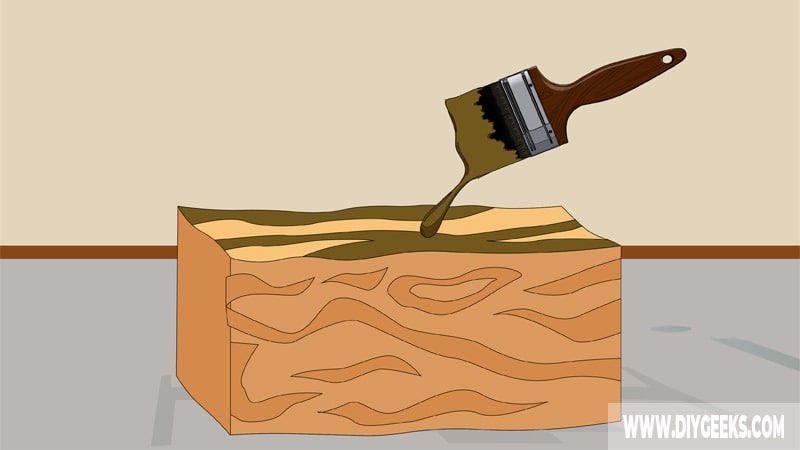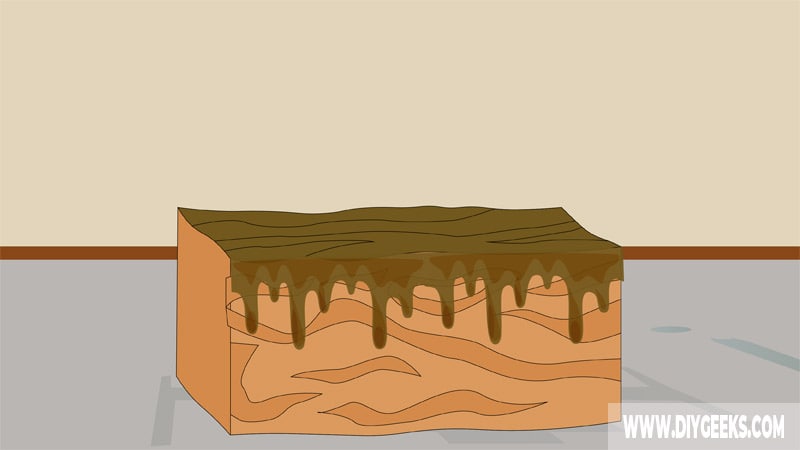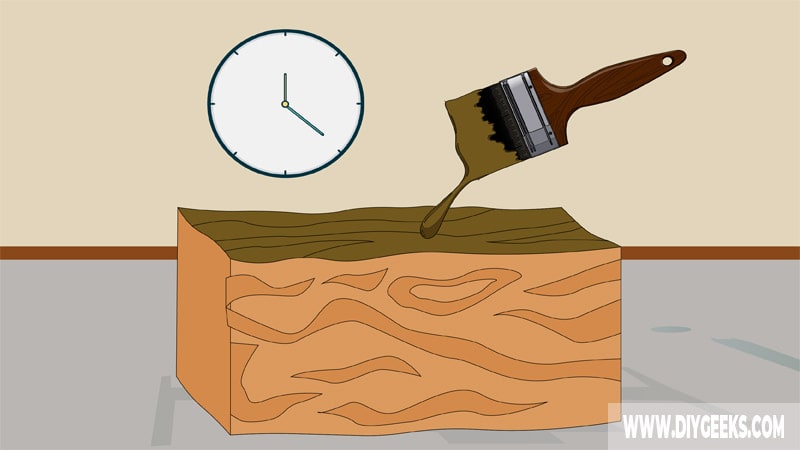Tung oil or China wood oil, is a natural wood finish obtained from Tung tree (“Aleurites fordii or Vernicia fordii”) seeds.
You need between 2-6 Boiled Tung oil coats and 2 Raw Tung oil coats for proper coverage, protection, and durability.
If you don’t apply enough Tung oil coats, the finish will have poor coverage and durability. If you apply too many coats, the finish will turn sticky, create a deep (dark) honey-like finish, and might peel off.
How Many Tung Oil Coats For Different Surfaces?
Wood
You need between 4-6 Boiled Tung oil coats and 2 Raw Tung oil coats for wooden surfaces. Raw Tung oil is thicker and has better coverage, so you need fewer coats.
Table
You need between 2-3 Boiled Tung oil coats on table surfaces.
Pine
You need between 2-4 Tung oil coats on Pinewood surfaces. Pinewood is a softwood and they don’t absorb wood oils evenly, so you shouldn’t apply too many coats as it can create a splotchy finish.
Guitar Neck
You need between 2-3 Tung oil coats over Guitar Necks. You don’t need too many coats as guitar necks aren’t exposed to moisture, UV rays, or water that can damage it.
Butcher Block
You need between 4-6 Tung oil coats under a Butcher’s block. Tung oil will prevent water, moisture, and stains from damaging it.
Floors
You need between 4-6 Tung oil coats for high-traffic floors and 2-5 coats for low-traffic floors. High-traffic floors are exposed to constant walking, weight, and usage, and need more protection.
Why Does The Number of Tung Oil Coats Matter?
The number of Tung oil coats matters as it determines the dry time of the finish, the color shade, water resistance, and the durability of the finish. You need between 2-6 Boiled Tung oil coats and 2 Raw Tung oil coats for proper coverage and durability.
If you apply the right number of Tung oil coats, the finish dries in time, produces a honey-tone color shade, and has a high water resistance and durable finish. If you apply fewer Tung oil coats, the finish dries faster, produces a lighter honey-tone color shade, and has weaker water resistance and durability.
If you apply too many Tung oil coats, the finish takes longer to dry and can turn sticky, the finish produces a colorful honey-tone finish that isn’t transparent, and the finish doesn’t become more durable.
The more coats you apply, the longer Tung oil takes to dry as there’s more solvent (oil) on the surface that must evaporate. Also, you must wait until one coat dries before applying the next one, so it takes longer to complete the project.
The Tung oil honey-tone color shade gets deeper the more coats you apply. If you apply too many coats, the finish will fully cover the wood grain as there’s too much pigment on the surface.
The number of Tung oil coats improves the finish water-resistance and durability to a point. If you apply more than 6 coats, the finish water-resistance or durability won’t get better.
How To Know If You Need Another Tung Oil Coat?

To know if you need another Tung oil coat, inspect the surface coverage, color shade, and durability. You need another coat, if the Tung oil hasn’t covered the surface fully, the color shade is too light, or durability is low.
Tung oil penetrates the wood pores to adhere and dry — if there isn’t a Tung oil top layer over the wood surface, apply another coating as the surface isn’t properly covered. The wood oil must produce a top layer over the surface to protect it.
Tung oil produces a honey-like semi-transparent finish that enhances the wood grain. If the finish hasn’t enhanced the wood grain, apply one more coat.
You don’t need another Tung oil coat if the coating has covered the surface fully, it has a honey-like semi-transparent finish, or the finish is durable and doesn’t absorb water.
You can also check the user’s guide or manufacturer’s instructions to know the exact number of coats you need.
What Happens if You Don’t Apply Enough Tung Oil Coats?
If you don’t apply enough Tung oil coats, the finish will have poor coverage and durability and a lighter color shade.
If the finish has poor coverage and durability, the wood surface won’t be protected from water, moisture, handling, or other damage. The finish will allow water penetration, and become light and transparent until it creates a streaky finish or dissolves completely.
What Happens If You Apply Too Many Tung Oil Coats?

If you apply too many Tung oil coats, the finish turns sticky, produces a deep (dark) color shade, and might peel off.
Tung oil must penetrate the wood pores to adhere and dry. If you apply too many coats, wood can’t absorb all of it so the remaining will stay over the top layer and turn sticky. If the finish remains sticky for too long, it will get contaminated and you must remove it.
Too many Tung oil coats will produce a dark (deeper) honey-tone finish that covers the wood grain.
How Long Does Tung Oil Take to Dry Between Coats?

Tung oil takes around 24 hours to dry between coats and 3 days to cure (fully dry).
The exact dry time is determined by the room temperature and humidity levels, number of coats, and coat viscosity.
For instance, Tung oil takes longer to dry if the room temperature is lower than 50°F (10°C) and humidity is higher than 50%, or if you apply more than 6 coats.
Tung oil dries through evaporation — the solvent (oil) must evaporate from the surface and the coating must become hard (or rigid) for the wood oil to dry.


